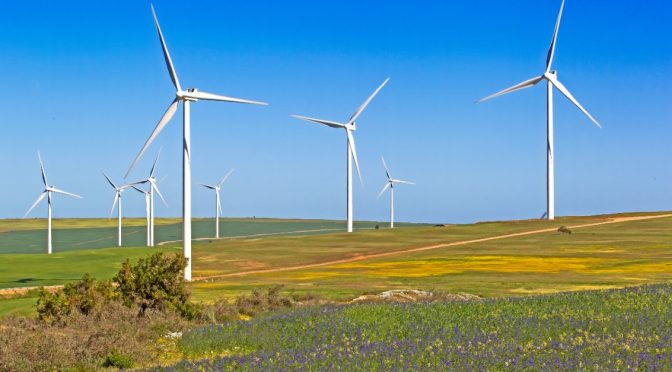South Africa’s energy market is at a critical juncture, as the country faces a growing demand for electricity and a need to diversify its energy mix to reduce dependence on fossil fuels. One of the most promising solutions to this challenge lies in harnessing the power of the wind, a resource that is abundant in South Africa and has the potential to transform the nation’s energy landscape.
The South African government has recognized the importance of wind energy and has set ambitious targets for its development. The Integrated Resource Plan (IRP) for electricity, which outlines the country’s energy strategy until 2030, envisions that wind power will contribute 18% of the total installed capacity by the end of the period. This translates to a massive increase in wind energy capacity, from the current 2,100 MW to over 11,000 MW.
In order to achieve this goal, South Africa has launched the Renewable Energy Independent Power Producer Procurement Programme (REIPPPP), which aims to attract private investment in renewable energy projects. Since its inception in 2011, the program has been a resounding success, with over 6,400 MW of renewable energy capacity procured from independent power producers, including more than 3,300 MW of wind energy.
The growth of the wind energy sector in South Africa has been accompanied by significant technological advancements and cost reductions. The cost of wind energy has decreased by more than 50% since the first REIPPPP auction, making it one of the most competitive sources of electricity in the country. Moreover, the latest generation of wind turbines is more efficient and reliable, allowing for higher energy production and lower maintenance costs.
Despite these positive developments, there are still several challenges that need to be addressed in order to unlock the full potential of wind energy in South Africa’s energy market. One of the main obstacles is the lack of adequate transmission infrastructure, which is necessary to connect the wind farms to the national grid and distribute the electricity to the consumers. The South African government has acknowledged this issue and has committed to investing in the expansion and upgrading of the transmission network.
Another challenge is the intermittency of wind energy, which means that the electricity generation from wind turbines is not constant and depends on the wind conditions. This can create difficulties in balancing the supply and demand of electricity in the grid, especially when the share of wind energy increases. To mitigate this issue, South Africa needs to invest in energy storage technologies, such as batteries and pumped hydro storage, as well as in the development of a more flexible and responsive electricity grid.
Furthermore, the successful integration of wind energy into the energy market requires a supportive regulatory framework and a level playing field with other sources of electricity. This includes the establishment of fair and transparent rules for grid access, as well as the removal of any subsidies or preferential treatment for fossil fuels.
In conclusion, the potential of wind energy in South Africa’s energy market is immense, and the country has already made significant progress in harnessing this resource. However, in order to fully unlock the benefits of wind power and achieve a sustainable and diversified energy mix, it is essential to address the remaining challenges and create an enabling environment for the growth of the sector. By doing so, South Africa can not only ensure its energy security but also contribute to the global fight against climate change and the transition to a low-carbon economy.


